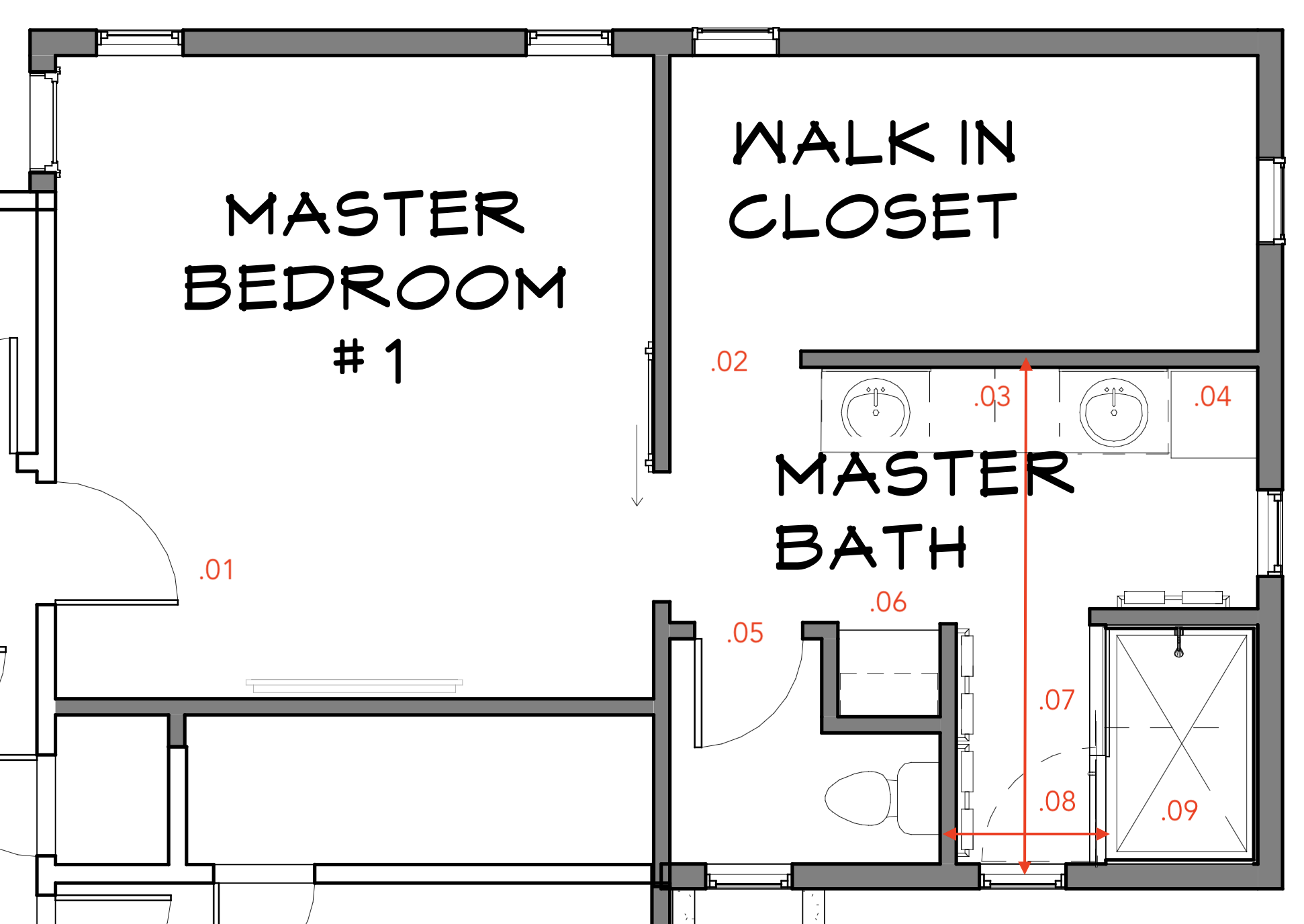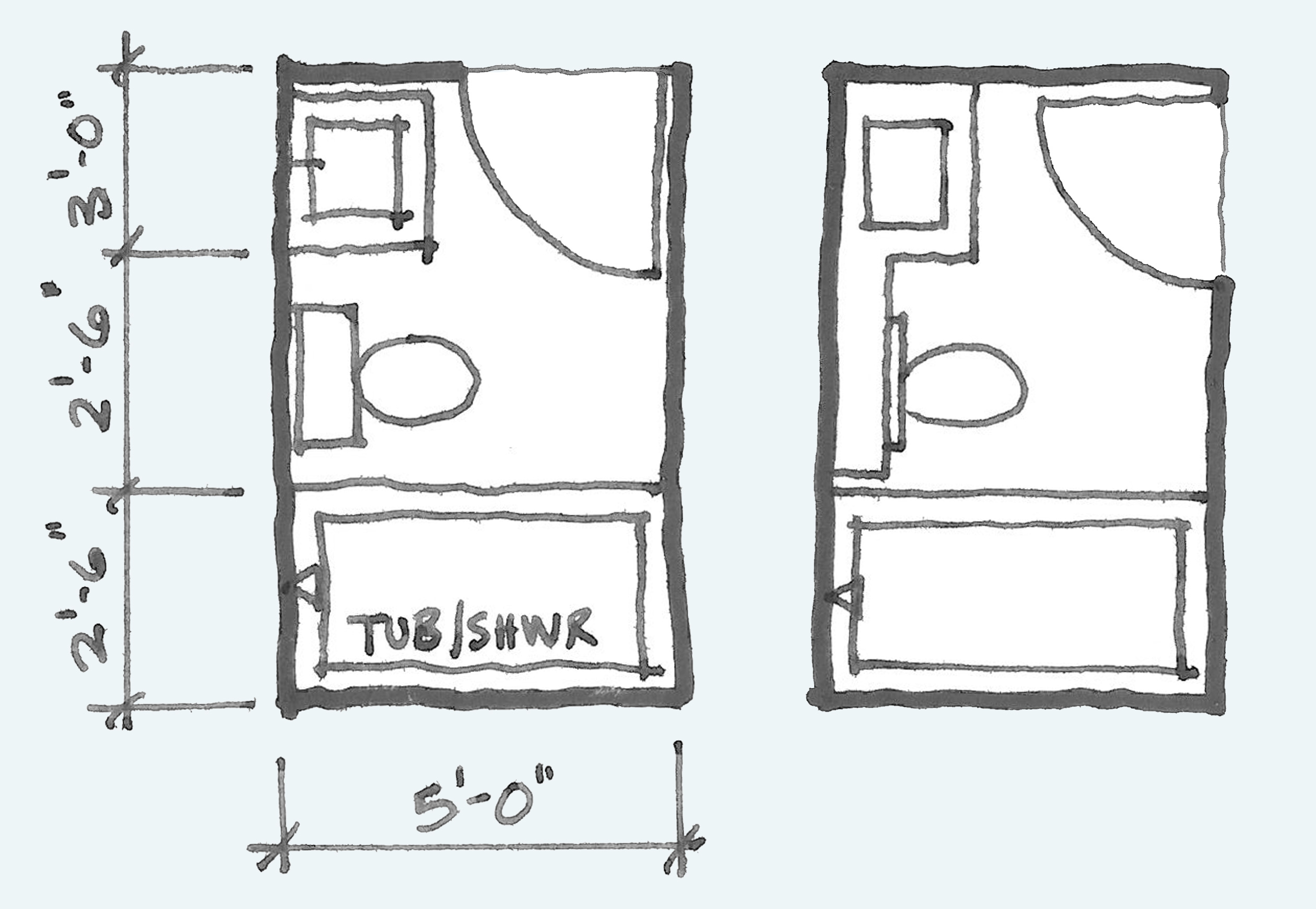Master Bathroom Design Considerations

The master bathroom, often a sanctuary for relaxation and rejuvenation, deserves meticulous attention to detail. When paired with a closet, this space becomes a haven for both personal care and wardrobe management. Functionality is paramount, ensuring the space seamlessly serves its dual purpose.
Functionality and Usability
A well-designed master bathroom with a closet prioritizes functionality, maximizing both space and ease of use. The design should cater to the individual needs and preferences of the homeowner, ensuring a comfortable and efficient experience.
- Separate Vanity Areas: A separate vanity area for each person in the household provides ample space for toiletries, makeup, and grooming essentials, minimizing clutter and enhancing personal space.
- Dual Sinks: Dual sinks significantly enhance convenience, allowing for simultaneous use and reducing morning rush-hour congestion. This is especially beneficial for couples or families, promoting a more harmonious start to the day.
- Dedicated Storage Zones: Strategic storage zones within the bathroom and closet are crucial. This includes well-organized shelves, drawers, and cabinets for towels, linens, toiletries, and clothing. Consider using vertical space efficiently with stackable shelves and pull-out drawers.
Natural Light and Ventilation
Natural light and proper ventilation are crucial for creating a comfortable and inviting bathroom space. These elements contribute to a sense of well-being and enhance the overall ambiance.
- Maximizing Natural Light: Large windows, skylights, or strategically placed mirrors can effectively enhance natural light penetration. This brightens the space, reduces the need for artificial lighting, and creates a more welcoming atmosphere.
- Adequate Ventilation: Effective ventilation is essential for eliminating moisture, preventing mildew, and maintaining a fresh, clean air quality. Consider installing exhaust fans with moisture sensors to ensure proper ventilation during showers or baths.
Layout and Space Optimization: Floor Plan Master Bathroom With Closet
Master bathroom design is not just about aesthetics; it’s also about maximizing functionality and creating a serene space for relaxation. A well-designed bathroom with a closet can be a sanctuary, offering both practicality and style.
Closet Configurations
Choosing the right closet configuration for your master bathroom is crucial for optimizing space and functionality. Different closet styles cater to diverse needs and preferences. Here are examples of popular closet configurations:
- Walk-in Closets: These spacious closets offer ample room for clothing, shoes, and accessories. They typically feature multiple shelves, drawers, and hanging rods, allowing for easy access and organization. Walk-in closets are ideal for larger bathrooms and provide a luxurious feel.
- Reach-in Closets: As the name suggests, reach-in closets are accessed by opening a door and reaching into the space. They are often smaller than walk-in closets but can still be very functional, especially for smaller bathrooms. Reach-in closets are often equipped with shelves, drawers, and hanging rods, offering a range of storage options.
- Built-in Shelving Units: Built-in shelving units are integrated into the bathroom’s design and can be customized to fit specific needs. They offer a streamlined and elegant look, maximizing storage space without sacrificing visual appeal. These units can include open shelves, drawers, and even hidden compartments for storing toiletries, towels, and other bathroom essentials.
Optimizing Closet Storage, Floor plan master bathroom with closet
Effective storage within a closet is essential for maintaining a clutter-free and organized bathroom. Here are design tips for maximizing storage space and creating a functional closet:
- Maximize Vertical Space: Utilize the full height of the closet by installing shelves and hanging rods that reach the ceiling. This allows for efficient use of vertical space and creates a sense of spaciousness.
- Use Dividers for Organization: Install dividers or drawer organizers to separate different types of items. This helps keep items neatly categorized and easily accessible. For example, you can use dividers to separate clothing by season, type, or occasion.
- Utilize Drawer Space: Incorporate drawers into the closet design to store smaller items like socks, underwear, and accessories. Drawers can be organized using drawer dividers or trays to keep items neatly arranged.
- Consider Pull-Out Drawers and Shelves: Install pull-out drawers or shelves for easy access to items stored in the back of the closet. This eliminates the need to dig through piles of clothing or accessories to find what you need.
Master Bathroom Features and Amenities

The master bathroom is often considered a sanctuary, a place to unwind and pamper oneself. To elevate this space, consider incorporating features and amenities that enhance comfort, functionality, and aesthetic appeal.
Popular Bathroom Features and Amenities
The most sought-after features in a master bathroom with a closet include:
- Freestanding Bathtub: A freestanding bathtub offers a luxurious and spa-like experience. Its elegant design often becomes the focal point of the bathroom, adding a touch of sophistication.
- Walk-in Shower: Walk-in showers are increasingly popular for their accessibility and ease of use. They are particularly beneficial for individuals with mobility limitations or those who prefer a more spacious showering experience.
- Separate Toilet Area: A separate toilet area provides privacy and enhances the overall bathroom design. This separation creates a sense of order and allows for a more spacious and aesthetically pleasing layout.
Bathroom Fixtures and Finishes
Bathroom fixtures and finishes play a crucial role in the overall aesthetic and functionality of the space.
- Bathroom Faucets: Faucets are available in a wide range of styles, materials, and finishes. For a modern aesthetic, consider chrome or brushed nickel finishes. For a more traditional look, brass or oil-rubbed bronze finishes are popular choices.
- Showerheads: Showerheads are a key component of the showering experience. Rain showerheads provide a luxurious and enveloping experience, while handheld showerheads offer greater flexibility and control.
- Bathroom Sinks: Bathroom sinks are available in various materials, including porcelain, ceramic, and stone. Undermount sinks offer a sleek and modern look, while vessel sinks provide a more decorative and statement-making option.
- Tile: Tile is a versatile and durable material that can be used for both floors and walls in a master bathroom. Ceramic tile is a cost-effective option, while porcelain tile is more durable and resistant to water damage. Natural stone tiles, such as marble and granite, add a touch of luxury and elegance.
Creating a Luxurious and Spa-like Atmosphere
Transforming a master bathroom into a spa-like retreat involves careful consideration of lighting, color palettes, and decorative elements.
- Lighting: Lighting plays a crucial role in creating the desired ambiance. Dimmable overhead lights provide general illumination, while accent lighting can highlight specific features. Consider incorporating natural light through large windows or skylights.
- Color Palettes: Neutral colors, such as white, beige, and gray, create a sense of calm and serenity. Adding pops of color through towels, rugs, and accessories can inject personality and vibrancy into the space.
- Decorative Elements: Decorative elements, such as plants, candles, and artwork, can enhance the spa-like ambiance. Plants add a touch of nature and freshness, while candles create a soothing and aromatic atmosphere.
